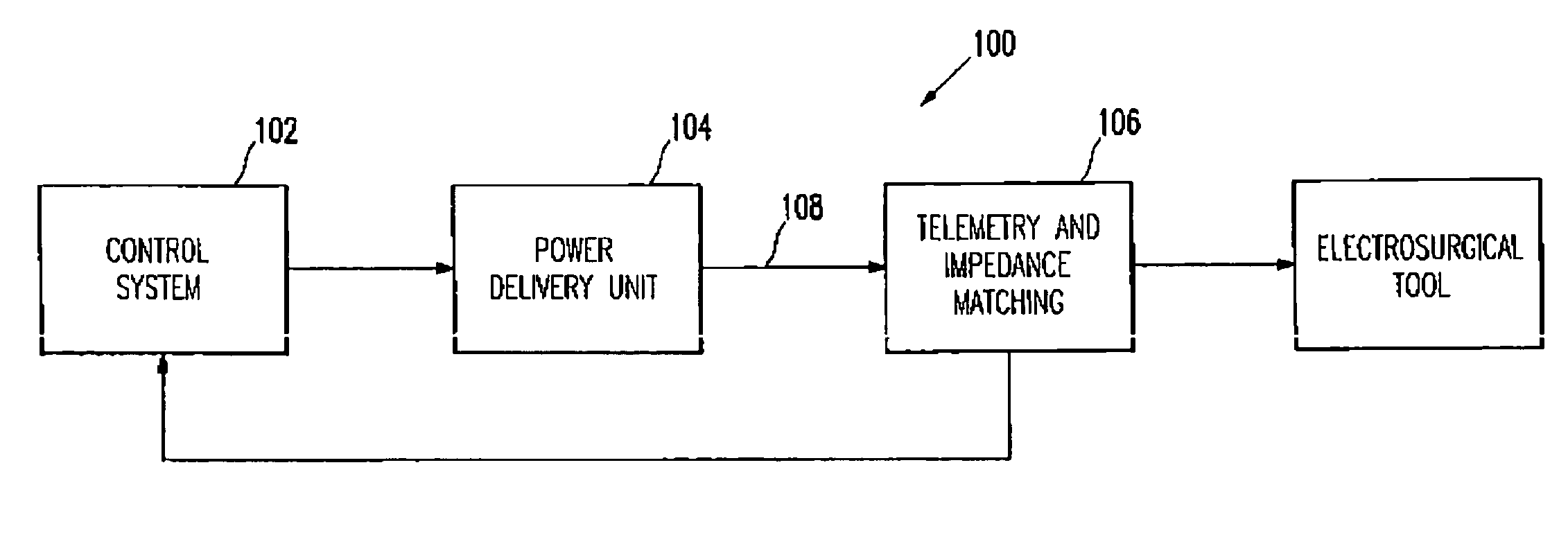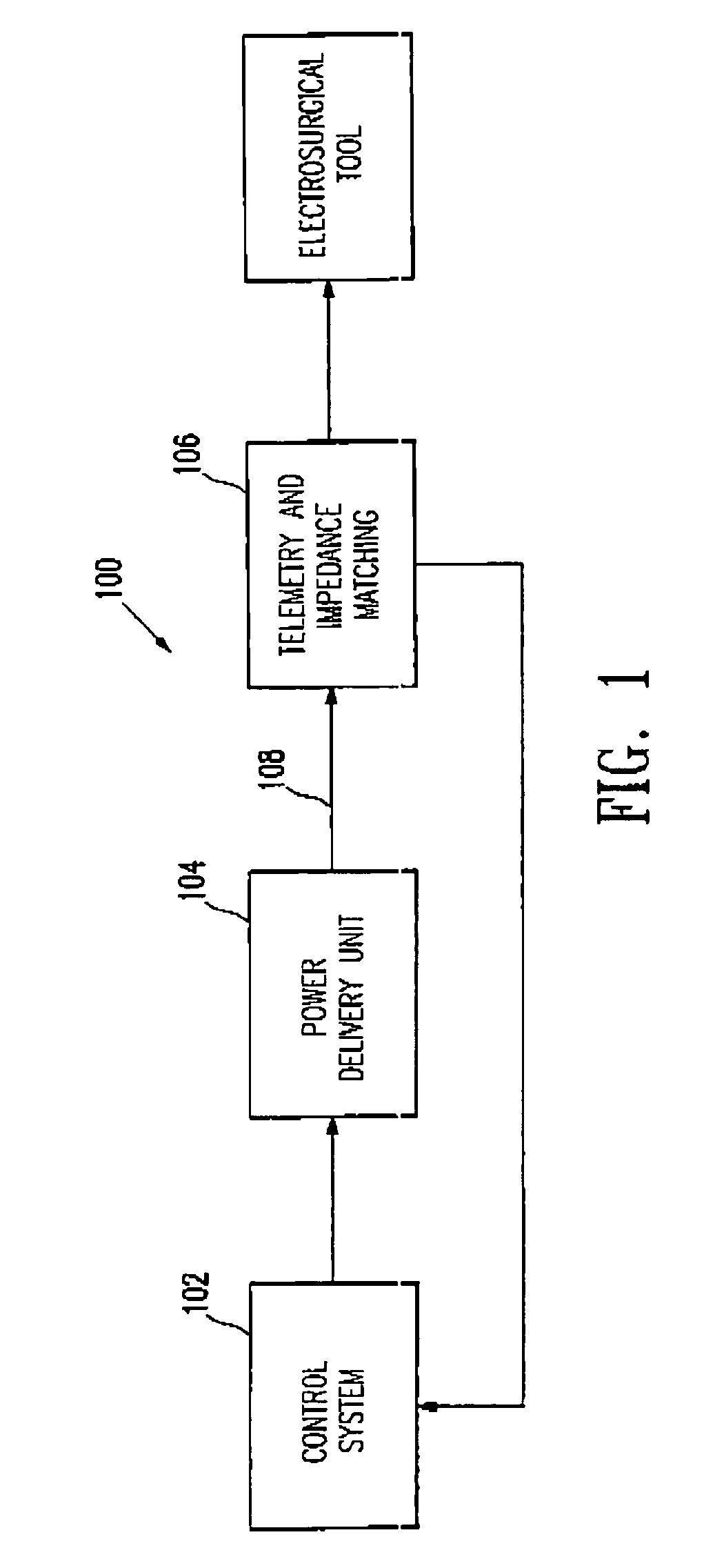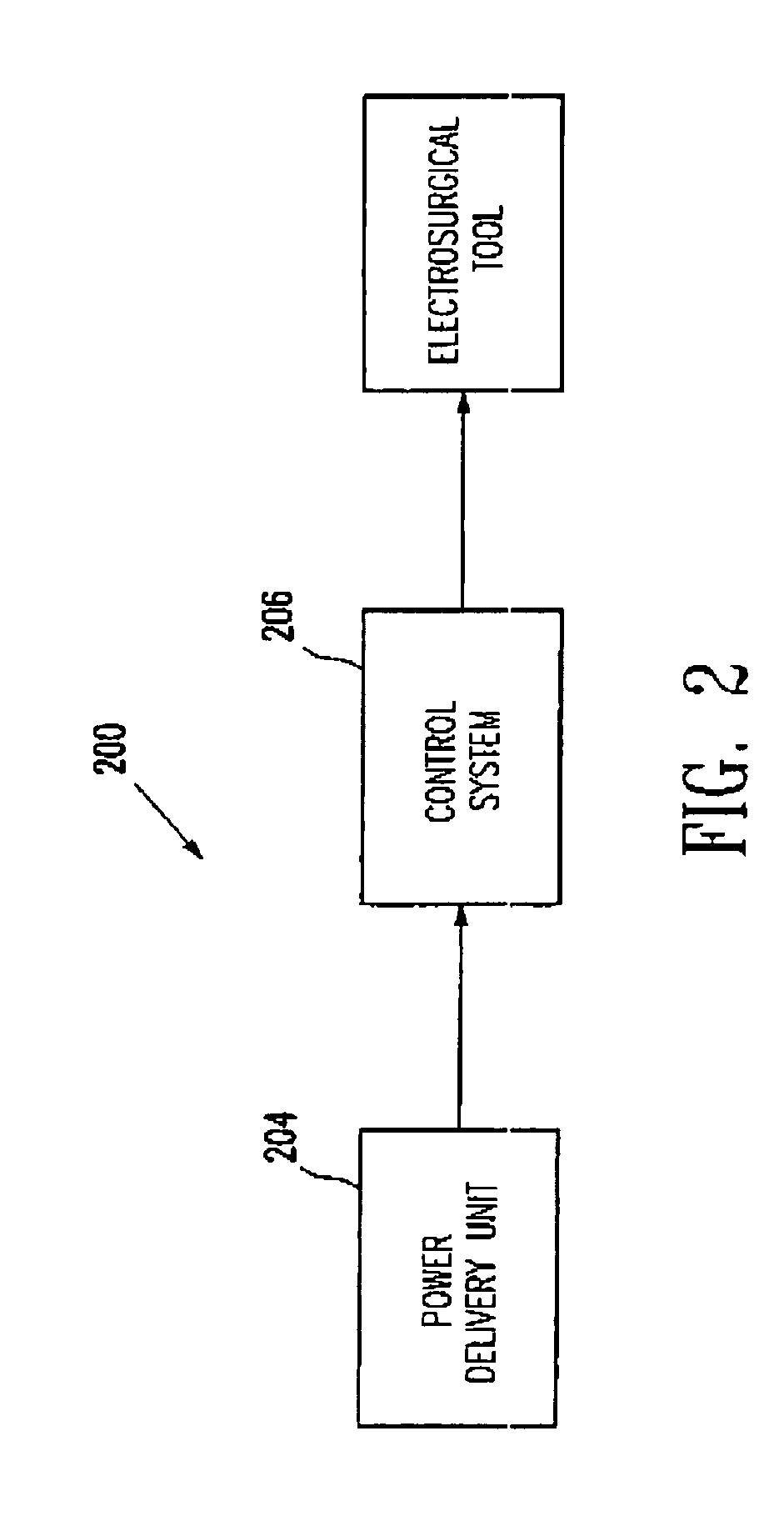High frequency power source
a power source and high-frequency technology, applied in the field of high-frequency power sources, can solve the problems of reducing the ability of a pathologist to diagnose the sample, affecting the diagnosis of the sample, so as to facilitate the use of long electrodes, reduce the total power required, and increase the starting and sustaining voltag
- Summary
- Abstract
- Description
- Claims
- Application Information
AI Technical Summary
Benefits of technology
Problems solved by technology
Method used
Image
Examples
Embodiment Construction
[0030]FIG. 1 is a block diagram illustrating a power delivery system 100 constructed in accordance with the invention for use in an electrosurgical procedure. The power delivery system 100 includes a control system 102. The control system generates a desired waveform for use in the electrosurgical procedure. The control system 102 outputs the desired waveform to a power delivery unit 104. The control system 102 condition the waveform, including, for example, amplitude control, gating and duty factor control. Gating and duty factor control are explained in more detail below. The power delivery unit 104 receives the desired waveform, amplifies and provides electrical capability, and outputs a power waveform. In one embodiment the power delivery unit may be a voltage controlled electrical power generating unit configured to produce a high frequency current having an essentially sinusoidal waveform having a total harmonic distortion (THD) of less than 5%.
[0031]The power waveform output ...
PUM
 Login to View More
Login to View More Abstract
Description
Claims
Application Information
 Login to View More
Login to View More - R&D
- Intellectual Property
- Life Sciences
- Materials
- Tech Scout
- Unparalleled Data Quality
- Higher Quality Content
- 60% Fewer Hallucinations
Browse by: Latest US Patents, China's latest patents, Technical Efficacy Thesaurus, Application Domain, Technology Topic, Popular Technical Reports.
© 2025 PatSnap. All rights reserved.Legal|Privacy policy|Modern Slavery Act Transparency Statement|Sitemap|About US| Contact US: help@patsnap.com



